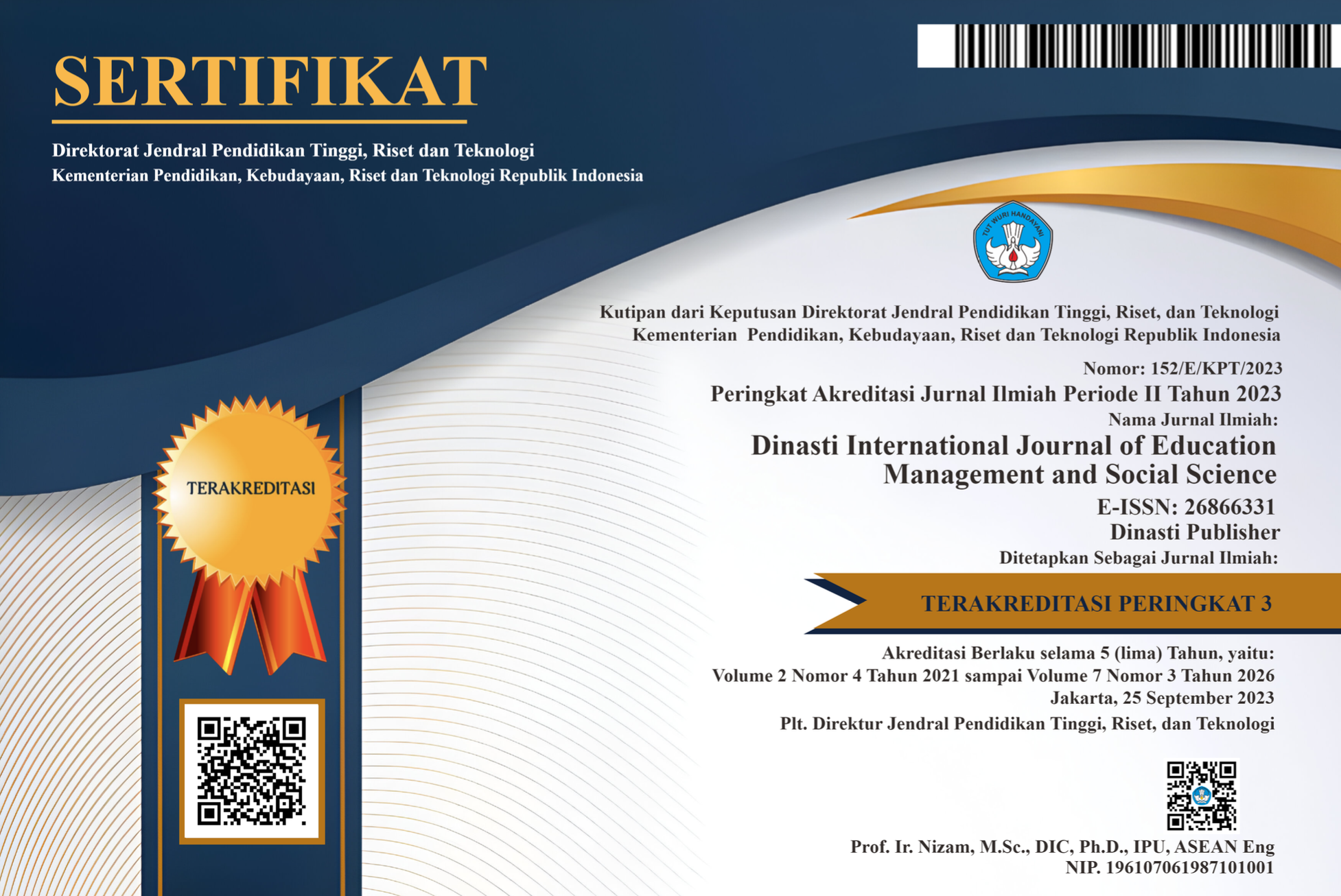Performance Analysis of Recruitment Selection Strategy Based on Financial Performance with Cost Per Hire (CPH) Formulation
DOI:
https://doi.org/10.38035/dijemss.v6i5.4636Keywords:
Cost Per Hire, Financial Performance, Recruitment, Food Menu SelectionAbstract
The challenge of today's business organizations is to get the best employees at a low-cost performance. Recruitment costs are considered important and become part of a business strategy so that business processes run effectively and efficiently. So that knowledge of simultaneous recruitment and selection costs is needed by business organizations to support the achievement of a business vision globally. This research is a qualitative descriptive research design using the cost per hire (CPH) formulation as a formulation to calculate recruitment costs and a comparison of the findings was carried out in 5 different company objects in different fields. Based on the results of the research, it was found that hoteliers and plantation companies relatively have high selection recruitment costs, this is due to the needs of candidates, the majority of whom are specialists, so they require comprehensive selection recruitment procedures and involve external services in their implementation. In manufacturing companies, services and trade are relatively lower because the need for labor is generally relatively mass and non-skilled so the procedure is relatively simpler. In order for this study to produce broader findings data, it is hoped that future studies will use more company objects, more comprehensive calculation formulations, and by using broader cost indicators.
References
Alashmawy, A., & Rashad, Y. (2019). A Review of the Role of Marketing in Recruitment and Talent Acquisition. International Journal of Management, Accounting and Economics, 6(7), 569–582.
Ambrosini, V., & Billsberry, J. (2007). Person–Organisation Fit as an Amplifier of Tacit Knowledge Véronique Ambrosini,. 1st Global E-Conference on Fit, November, 1–8.
Aulia, A. F. (2019). Analisis Pelaksanaan Rekrutmen Dan Seleksi Calon Karyawan Baru Di Rsia Kendangsari Merr Surabaya. Medical Technology and Public Health Journal, 3(2), 107–119. https://doi.org/10.33086/mtphj.v3i2.690
Aziz, T. A., Maarif, M. S., & Sukmawati, A. (2017). Pengaruh Rekrutmen dan Seleksi Terhadap Kinerja. Jurnal Aplikasi Bisnis Dan Manajemen, 3(2), 246–253. https://doi.org/10.17358/jabm.3.2.246
Carroll, M., Marchington, M., Earnshaw, J., & Taylor, S. (1999). Recruitment in small firms: Processes, methods and problems. Employee Relations, 21(3), 236–250. https://doi.org/10.1108/01425459910273080
Florea, N. V. (2013). Cost/Benefit Analysis – a Tool To Improve Recruitment, Selection and Employment in Organisations. Management & Marketing, XVIII(2), 274–290.
Fuad. (2021). Perencanaan Strategis Dan Pengelolaan Sumber Daya Manusia. Jurnal Manajemen Dan Bisnis, 2(02), 99–111.
Gagua, L. (2015). Levan Gagua. E-Recruitment and Applicant Tracking System, 44.
Gajda, M., Kowalska, M., & Zejda, J. E. (2021). Impact of two different recruitment procedures (Random versus volunteer selection) on the results of seroepidemiological study (sars?cov?2). International Journal of Environmental Research and Public Health, 18(18). https://doi.org/10.3390/ijerph18189928
Gee, J., Button, P. M., Wang, V., Blackbourn, D., & Shepherd, D. (2019). The real cost of recruitment fraud. Crowe, April.
Gusain, N. (2017). Talent acquisition vs development: With a focus on leadership development programs. Cornell HR Review.
Halisa, N. N. (2020). Peran Manajemen Sumber Daya Manusia “Sistem Rekrutmen, Seleksi, Kompetensi dan Pelatihan” Terhadap Keunggulan Kompetitif: Literature Review. ADI Bisnis Digital Interdisiplin Jurnal, 1(2 Desember), 14–22. https://doi.org/10.34306/abdi.v1i2.168
Hamza, P. A., Othman, B. J., Gardi, B., Sorguli, S., Aziz, H. M., Ahmed, S. A., Sabir, B. Y., Ismael, N. B., Ali, B. J., & Anwar, G. (2021). Recruitment and Selection: The Relationship between Recruitment and Selection with Organizational Performance. International Journal of Engineering, Business and Management, 5(3), 1–13. https://doi.org/10.22161/ijebm.5.3.1
Huang, T. Y., & Li, C. (2022). Retaining part-time seasonal employees in the amusement park: perspectives from external and internal recruiting. Tourism Recreation Research, 0(0), 1–15. https://doi.org/10.1080/02508281.2022.2082155
Issn, P., & Issn, O. (2014). Globsyn Business School, National Campus, Kolkata ___________________________________________________________________________. Role of Information Technology in Human Resource Management of SME: A Study on the Use of Applicant Tracking System, 3(1), 1–22.
Itam, U. J., & Swetha, M. (2022). Examining the structural relationship between employee branding, TQHRM and sustainable employability outcome in Indian organized retail. TQM Journal, 34(October), 5–28. https://doi.org/10.1108/TQM-03-2021-0093
Johnson, R. D., Stone, D. L., & Lukaszewski, K. M. (2020). The benefits of eHRM and AI for talent acquisition. Journal of Tourism Futures, 7(1), 40–52. https://doi.org/10.1108/JTF-02-2020-0013
JOSE, S. (2019). Innovation in Recruitment and Talent Acquisition: a Study on Technologies and Strategies Adopted for Talent Management in It Sector. International Journal of Marketing & Human Resource Management, 10(3). https://doi.org/10.34218/ijmhrm.10.3.2019.001
Keyzer, J. F., Melnikow, J., Kuppermann, M., Birch, S., Kuenneth, C., Nuovo, J., Azari, R., Oto-Kent, D., & Rooney, M. (2005). Recruitment strategies for minority participation: Challenges and cost lessons from the POWER interview. Ethnicity and Disease, 15(3), 395–406.
Kriston, L., Hahlweg, P., Härter, M., & Scholl, I. (2020). A skills network approach to physicians’ competence in shared decision making. Health Expectations, 23(6), 1466–1476. https://doi.org/10.1111/hex.13130
Milo, A. (2014). Cost-effectiveness of health research study participant recruitment strategies?: A systematic review Title Page Title?: Cost-effectiveness of health research study participant recruitment strategies – a systematic review Word Count?: 3 , 290 ( max word 50. 11, 576–583.
Nginang, Y. (2019). Jurnal Economix Volume 7 Nomor 2 Desember 2019. Jurnal Economix, 7, 17–24.
Patrick, J. H., Pruchno, R. A., & Rose, M. S. (1998). Recruiting research participants: A comparison of the costs and effectiveness of five recruitment strategies. Gerontologist, 38(3), 295–302. https://doi.org/10.1093/geront/38.3.295
Polito, A., Meunier, N., Andriollo-Sanchez, M., Catasta, G., Azzini, E., Simpson, E. E. A., O’Connor, J. M., Roussel, A. M., Ferry, M., Coudray, C., & Maiani, G. (2005). Screening and recruitment procedure of late-middle aged and older subjects: The ZENITH study. European Journal of Clinical Nutrition, 59(October 2014), S8–S12. https://doi.org/10.1038/sj.ejcn.1602287
Prasetya, A. I., Cahyo, A. D., & Maula, A. (2019). METODE DAN PROSEDUR PELAKSANAAN REKRUTMEN SELEKSI PT. BANK RAKYAT INDONESIA (PERSERO) Tbk. Competence?: Journal of Management Studies, 12(2), 90–107. https://doi.org/10.21107/kompetensi.v12i2.4952
Prayudani, A., & Hendraningsih, R. (2019). Prosedur Rekrutmen Karyawan pada Toserba Selamat Kota Sukabumi. SEMNASTERA (Seminar Nasional Teknologi Dan Riset Terapan), 1(September), 204–210.
Rubens, A., Schoenfeld, G. A., Schaffer, B. S., & Leah, J. S. (2018). Self-awareness and leadership: Developing an individual strategic professional development plan in an MBA leadership course. International Journal of Management Education, 16(1), 1–13. https://doi.org/10.1016/j.ijme.2017.11.001
Samba’a Nikita A. (2018). Efektivitas Prosedur Rekrutmen Pegawai Negeri Sipil Di Badan Kepegawaian Daerah Kabupaten Banggai. In Administrasi Publik (Vol. 4).
Saviour, A. W., Kofi, A., Yao, B. D., & Kafui, L. A. (2019). The Impact of Effective Recruitment and Selection Practice on Organisational Performance (A Case Study at University of Ghana). Global Journal of Management and Business Research: A Administration and Management, 16(11), 25–34.
Tzelepis, F., Paul, C. L., Walsh, R. A., Wiggers, J., Knight, J., Lecathelinais, C., Daly, J., Neil, A., & Girgis, A. (2009). Telephone Recruitment into a Randomized Controlled Trial of Quitline Support. American Journal of Preventive Medicine, 37(4), 324–329. https://doi.org/10.1016/j.amepre.2009.05.022
Van Den Brink, M., Brouns, M., & Waslander, S. (2006). Does excellence have a gender?: A national research study on recruitment and selection procedures for professorial appointments in the Netherlands. Employee Relations, 28(6), 523–539. https://doi.org/10.1108/01425450610704470
Wright, G., & Jackson, W. (2018). Talent Rising; people analytics and technology driving talent acquisition strategy. Strategic HR Review, 17(5), 226–233. https://doi.org/10.1108/shr-08-2018-0071
Yuliyati, E. (2020). PENGEMBANGAN SUMBER DAYA MANUSIA BERBASIS TOTAL QUALITY MANAGEMENT DI SMK MUHAMMADIYAH PRAMBANAN. AL-TANZIM: Jurnal Manajemen Pendidikan Islam, 4(1), 24–35. https://doi.org/10.33650/al-tanzim.v4i1.967
Zhang, F., Jin, B., Liu, H., Leung, Y. W., & Chu, X. (2016). Minimum-cost recruitment of mobile crowdsensing in cellular networks. 2016 IEEE Global Communications Conference, GLOBECOM 2016 - Proceedings, December. https://doi.org/10.1109/GLOCOM.2016.7841988
Downloads
Published
How to Cite
Issue
Section
License
Copyright (c) 2025 Achmad Brian Fajar Prayogi, Wisnu Panggah Setiyono

This work is licensed under a Creative Commons Attribution 4.0 International License.
Authors who publish their manuscripts in this journal agree to the following conditions:
- The copyright on each article belongs to the author(s).
- The author acknowledges that the Dinasti International Journal of Education Management and Social Science (DIJEMSS) has the right to be the first to publish with a Creative Commons Attribution 4.0 International license (Attribution 4.0 International (CC BY 4.0).
- Authors can submit articles separately, arrange for the non-exclusive distribution of manuscripts that have been published in this journal into other versions (e.g., sent to the author's institutional repository, publication into books, etc.), by acknowledging that the manuscript has been published for the first time in the Dinasti International Journal of Education Management and Social Science (DIJEMSS).















































